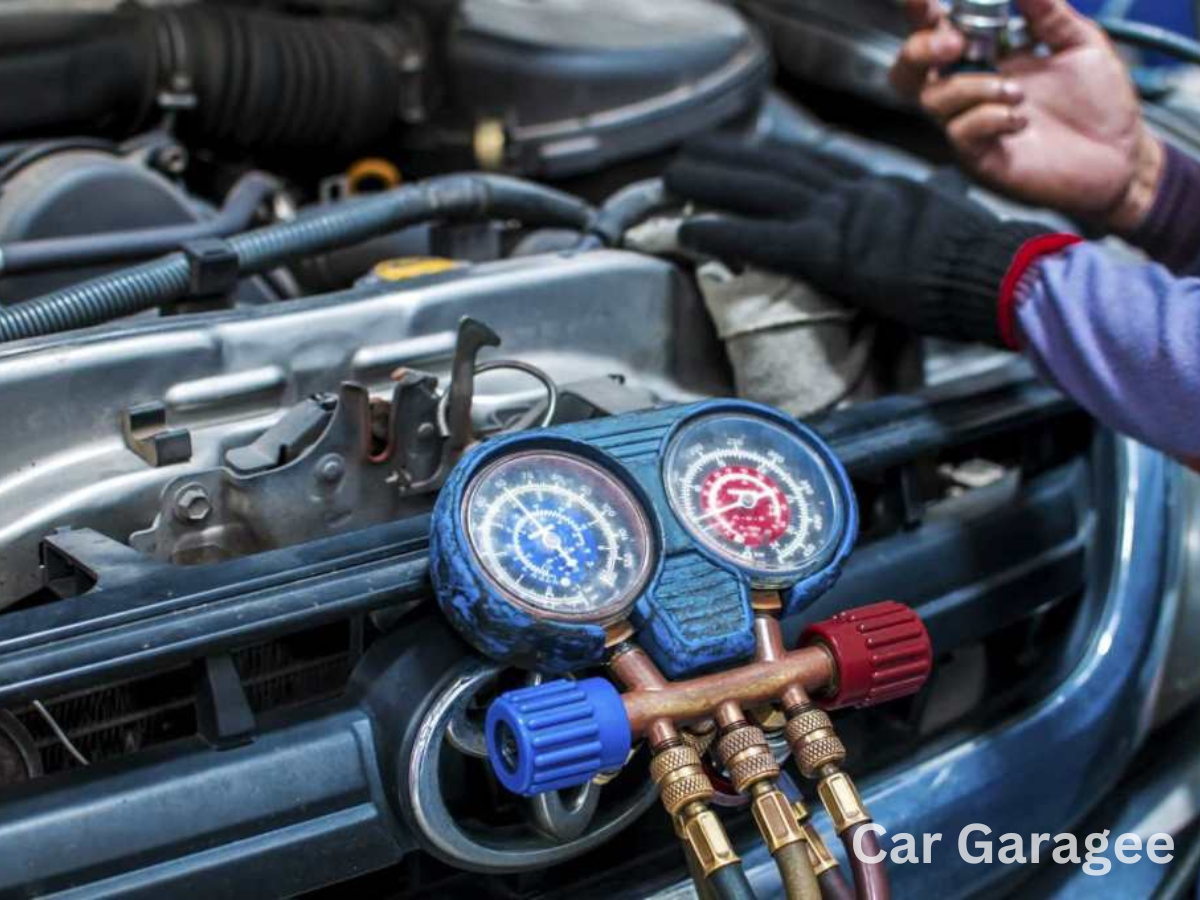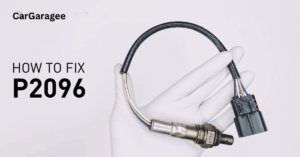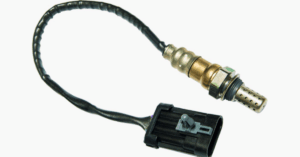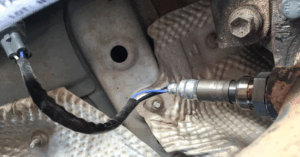Imagine sitting in your car on a hot day, turning on the AC, and getting warm air instead of cool air. It’s frustrating, right?
If your car’s AC isn’t working as it should, it might be time to vacuum the system. Not sure how to do it or how long it takes?
Don’t worry! In this guide, We’ll show you how long to pull vacuum on car ac system and how to vacuum your car’s AC system so you can get back to enjoying cool air in no time.
How Long To Vacuum AC System
Vacuuming an AC system is an essential step to make sure it runs smoothly and lasts longer. When considering how long to pull a vacuum on a car AC system, it usually takes between 20 to 45 minutes, depending on the system’s size and whether there are any leaks. If there are no leaks, how long to vacuum an AC system should be around 30 to 45 minutes to remove moisture and dirt effectively.
For car AC systems, it’s essential to pull a deep vacuum to get rid of moisture that could cause problems like rust or freezing. A vacuum of about 500 microns or 29.92 Hg gauge pressure is recommended. This level of vacuum effectively removes any moisture and non-condensable gases that might have entered when the system was open.
A good approach is first to pull the system into a vacuum, then close the valves and turn off the vacuum pump. After that, wait for about 10 minutes to see if the vacuum holds. If the vacuum level drops a lot, it could mean there’s a leak. If the vacuum holds steady, you can continue vacuuming the AC system for another 20 to 30 minutes to fully prepare it for recharging.
It’s also a good idea to replace parts like the AC receiver/drier or accumulator during this process. These parts help control moisture in the system, which is vital for keeping the AC system working well over time. This is especially crucial for cars, where a clean and dry system is vital to keeping the AC running efficiently.
In summary, how long to vacuum an AC system can vary, but spending around 30 to 45 minutes on it ensures a thorough job. This helps prevent potential problems and keeps your AC system in good condition for the long run.
READ MORE:
Reasons For Alternator Bearing Noise
Breaking Down the Fuel Induction Service Cost
What is Brake Boosting? A Detailed Guide
How To Pull a Vacuum on Car AC
Vacuuming your car’s AC system is an essential maintenance task that ensures it runs efficiently by removing moisture and contaminants. Here’s a detailed, easy-to-follow guide on how to vacuum AC in a car.
-
Preparing and Identifying Service Ports
Start by parking your car on a flat surface, preferably in a garage or a shaded area. Make sure the vehicle is off and that the AC system is not running. For safety, wear gloves and protective glasses before you begin.
You’ll need a set of manifold gauges for this task. Before hooking them up, locate the high and low service ports on your car’s AC system.
- High-Service Port: This port is typically larger and is found between the orifice tube or expansion valve and the condenser.
- Low-Service Port: This smaller port is usually located between the compressor and the evaporator. You can find it by following the AC compressor’s connections toward the bottom of the car.
With the ports identified, you’re ready to begin vacuuming the AC system.
-
Hooking Up the Manifold Gauge
Once you’ve identified the service ports, it’s time to hook up the manifold gauge. This tool connects your AC system to the low and high-pressure ports.
- Start by attaching the vacuum pump’s hose to the low-pressure port on the manifold gauge, which is located between the two gauges on the set.
- Connect the red valve to the high-pressure port and the blue valve to the low-pressure port.
- The yellow valve is used to connect the manifold gauge to the vacuum pump.
Important: Ensure all valves are in the closed position before connecting them to the AC system to avoid any accidental release of refrigerant.
-
Securing the Connections
Now, you need to secure the connections:
- Attach the gauge to the correct pressure port by lifting the connector ring upwards and then pushing it downwards onto the port.
- Turn the red valve clockwise to open the service valve below it. Repeat this step for the low-pressure port using the blue valve.
- Once everything is connected securely, activate the internal plunger by slightly taunting the small valve. This action opens the port valve to the refrigerant lines.
If you’re wondering how to pull a vacuum on a car AC without a pump, it is technically possible, but it’s much less effective. Using a proper vacuum pump is recommended for the best results.
-
Performing the Vacuuming Action
Before starting the vacuum process, ensure that the readings on both gauges are at “zero.” Then, connect the other end of the yellow hose to the vacuum pump.
- Turn the vacuum pump on. The vacuum pressure should rise, ideally reaching between 27 to 29 inches of mercury (Hg).
- Open the low-pressure valve on the gauge to start vacuuming. The process should take about 30 to 45 minutes, which is enough time to remove any moisture and dust from the AC system.
- After vacuuming, close the low-pressure valve and switch off the pump. The gauge should still show a reading between 27 to 29 inches. If the reading drops significantly, it indicates a vacuum leak. If everything is stable, you can proceed to the next step.
-
Recharging the AC System
When the vacuuming is complete, detach the vacuum pump and connect the hose to a refrigerant canister.
- Start the car and turn on the AC.
- Slowly open the low-pressure valve on the manifold gauge to allow the refrigerant to flow steadily into the system. This controlled flow helps maintain a constant pressure and prevents damage to the AC components.
- Once the system is charged, close all the valves, remove the manifold gauge and replace the service port caps.
Finally, close the car’s hood, and your AC system is ready to use. Following these steps will ensure that your AC system is free from moisture and contaminants, keeping it running efficiently and reliably.
FAQS
Why is it important to vacuum my car’s AC system?
Vacuuming your car’s AC system is essential because it removes air and moisture, which can cause problems. Moisture can freeze inside the system and block the refrigerant flow, making the AC less effective. Air in the system can also reduce cooling and damage AC parts over time. Vacuuming helps the AC work better and last longer.
Can I skip vacuuming if my car’s AC seems fine?
Even if your car’s AC seems to work fine, skipping vacuuming can lead to issues later. Moisture and air in the system might not cause problems immediately. Still, over time, they can reduce cooling, cause strange noises, and possibly damage the compressor. By not skipping this step, you help prevent expensive repairs in the future.
Does vacuuming the AC system improve cooling?
Yes, vacuuming can improve the cooling of your car’s AC. Removing moisture from the system helps the refrigerant flow better, which makes the AC more efficient at cooling your vehicle. Moisture can reduce the cooling power because it interferes with the refrigerant’s ability to move heat. Keeping the system dry helps it cool your car more effectively.
Can I vacuum my car’s AC system at home?
Yes, you can vacuum your car’s AC system at home with the right tools, like a vacuum pump and gauges. But it’s important to know how to use them correctly. If you don’t, you might not remove all the moisture and air or even damage the system. If you’re unsure, it’s safer to let a professional do it.
Will vacuuming the AC system remove all refrigerants?
No, vacuuming doesn’t remove the refrigerant from the system. It’s meant to remove air and moisture, not the refrigerant. If you need to remove the refrigerant, that’s a different process called refrigerant recovery, which requires special equipment. During recovery, the refrigerant is safely collected, reused or disposed of properly.

Mian Hashir is a passionate automotive enthusiast and the lead author at Car Garagee, a website dedicated to providing in-depth car reviews, maintenance tips, and the latest news in the automotive world. With years of experience in the industry, Hashir combines his technical knowledge with a love for cars to deliver insightful and engaging content. Whether you’re a car owner or a curious reader, Mian Hashir’s articles help readers make informed decisions, from choosing the right vehicle to understanding how to keep it in top condition.










